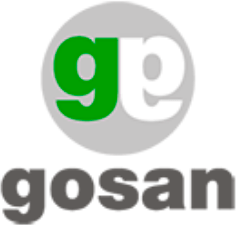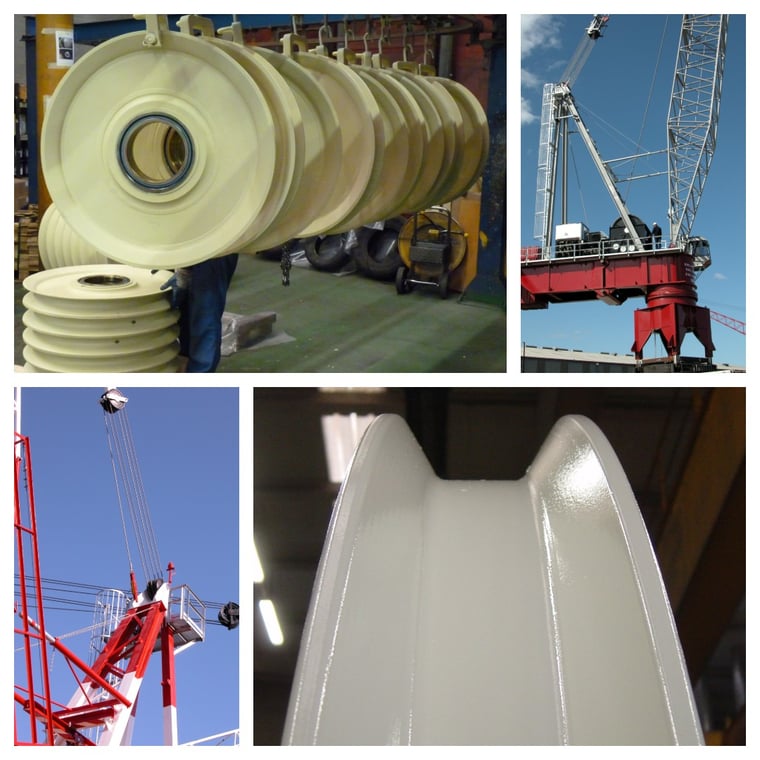.png)
TIPS FOR THE PROPER INSTALLATION AND MAINTENANCE OF INDUSTRIAL SHEAVES
Maintenance of sheaves and mechanical components is an essential task and must be integrated in the work processes. If performed properly, the performance of the sheaves will be optimum and their durability will be guaranteed. On the other hand, poor maintenance will lead to many problems. In the long term, improper or poor maintenance will incur high repair costs and losses derived from production downtime. Therefore, it is important to bear in mind the following measures:
Storage at a stable temperature and low humidity levels
When sheaves are being stored, it is important to keep them in steady atmospheric conditions, in a clean, dry and enclosed space. Bearings, components and oils must also be kept indoors, ensuring that they do not come into contact with aggressive materials, such as gases, mists, acid aerosols, bleach or salts, including vehicle emissions. Direct exposure to sunlight must also be avoided, as UVA radiation may accelerate their degradation.
Excessive humidity will cause the formation of condensation, whilst high temperatures may cause corrosion due to the loss of protective oils. Therefore, proper storage conditions consist of a frost-free space, with temperatures between a minimum of 5 ºC and a maximum of 40 ºC and a relative humidity of less than 65%. These values must be constantly controlled to ensure stable conditions.
Should mechanical components be stored outdoors, measures must be taken to protect them against dirt and moisture. Bearings, bushings and cavities must be fully greased to prevent condensation and the necessary precautions should be taken to avoid the entrance of foreign objects.
On the other hand, if the cable sheaves have been installed at the plant but are not going to be in use for a long period of time, it is recommended to keep the grooves greased to avoid rusting.
Greasing of the sheave bearing prior to installation
Prior to installation, the sheaves must be greased properly, ensuring that the grease reaches the cavities and overflows from both sides. Unless indicated otherwise, the sheave is greased from the centre through the axle through axial and radial lubrication channels. For the proper lubrication of cable sheaves with bearings, the grease hole must be above the centre of the lubrication hole in the axle.
Use of high quality lubricants
Lubrication processes must be carried out using high quality lithium-saponified grease, suitable for temperatures of minus 20 ºC up to plus 100 ºC. When the location of the installation requires more aggressive conditions, the lubricants should be chosen accordingly.
Regular maintenance
Lubrication
Throughout their useful life, cable sheaves with bearings must be greased at intervals ranging from 3 to 6 months, depending on their use and characteristics. Prior to lubrication, ensure that the lubrication holes are clean to prevent any fragments of material from entering the bearings. When applying the lubricant, check that the old grease is removed from the bearings, applying lubrication until the fresh grease appears.
On the other hand, for cable sheaves with bushings, greasing must be performed at more frequent intervals, at least once every four weeks.
Protection of the groove and rope when the sheave is put into service
Prior to the erection and commissioning, the cable grooves must be covered with viscous grease, a form of protection that must be maintained whenever they are in operation. The ropes must also be well lubricated.
In order to protect the groove, rope deviations and oscillation in excess of 2.5º should be avoided, otherwise the groove may wear prematurely.
The drive of the cable must be adjusted so that no sliding occurs at the beginning or end of each operation, as this will cause improper wear of the cables and grooves. There must be good initial tension to avoid axial and radial deformation in the groove.
Once the sheave is in service, the cable grooves must be controlled every 6 months to carry out proper maintenance. It should be considered that when doing a visual inspection of the groove, a fold is detected, this might not cause any problem. In case of doubt, it is recommended that more tests are performed, i.e., as magnetic particles.
In the case that the sheaves are erected horizontally, a way of drainage shall be considered. This hole or channel should be cleaned every 3 months or at the recurrence that the conditions should require.
Control of wear and welding
The main dimensions to be regularly controlled in order to ensure the proper functioning of the sheaves are the radius, groove depth and the wing thickness.
For the latter two dimensions, the maximum deviation values are indicated by the manufacturer. Both values must always be measured at the same point, so as to compare to the value of the dimensional control taken during the final inspection of the sheave at the manufacturer´s. In general, there must never be a deviation in excess of 15%.
As for the radius, it is necessary to check that the radius is always within the permitted values. If there is no limit marked by the application or the manufacturer, the maximum and minimum values indicated in API 9B will be used as a reference.
Depending on the use, accessibility, workload and service of the sheave, each operator will perform the tests on welding and materials specified in the corresponding standard, in addition to following the instructions recommended by the manufacturer.
Finally, it is important to remember that the proper maintenance of sheaves and mechanical components must be carried out regularly and in accordance with the manufacturer’s guidelines. This task must be carried out by qualified personnel, using the appropriate personal protection equipment in order to prevent potential accidents or improper actions. By following these measures, the useful life of the sheaves will be extended, avoiding repairs and unscheduled downtime that would inevitably lead to additional production costs.



